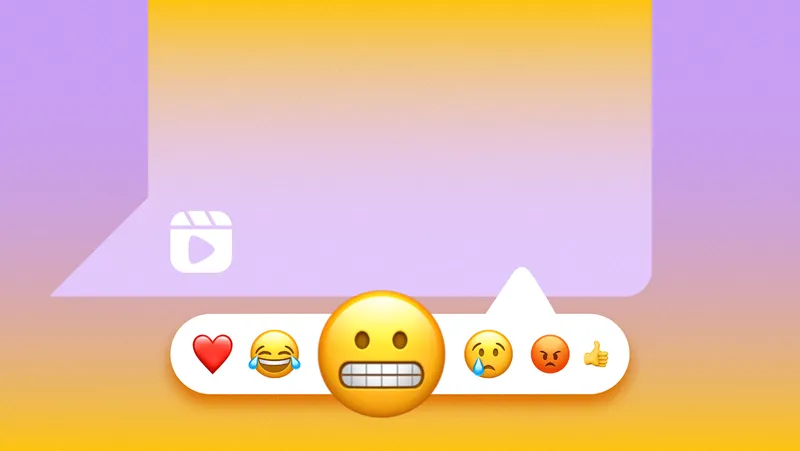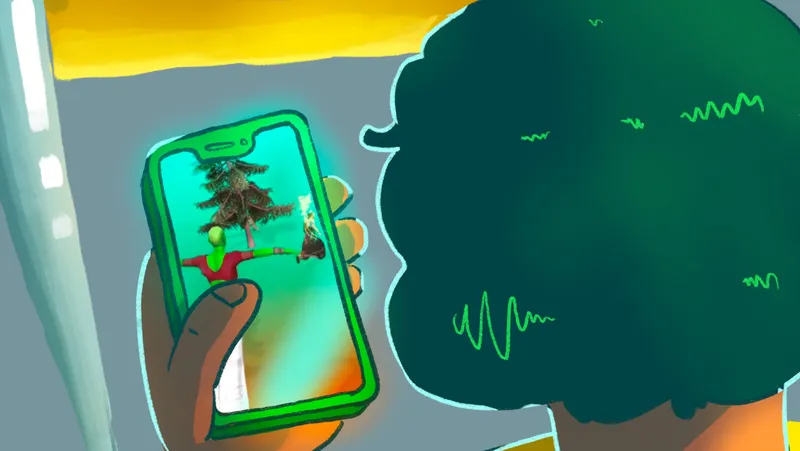Moye Moye and more: Understanding India’s obsession with popular meme culture
From Ayushman Khurana, who sang ‘Moye Moye’ at a concert, to Deepika Padukone, who mimicked “just looking like a wow”, several people are taking to popular memes and viral content, sparking a debate on why such content is addictive.
We often find ourselves spending hours on Instagram watching content that's sometimes funny, sometimes awkward, sometimes illogical, and sometimes irksome yet addictive.
Kashish Sharma, who is in her late twenties, realised she was down a meme rabbit hole when, one day, she found herself repeating "Maine khatti toffee kha rakhi hai (I have eaten a sour toffee)" for hours in a row.
For the unaware, the phrase—now sort of a punch line in the meme world—is from a widely popular reel featuring a child who is seen avoiding answering why he doesn't listen to his mother.
What makes such content addictive is hard to explain.
“A few months back, I just got a wave of similar memes all over my feed. My friends were watching it and eventually, I also fell for it. These memes are usually called 'cringe' and, to be honest, I don't know what in them appealed to me so much,” she says.
Sharma is not alone, Ahna Prakash, a crime reporter, says that she spends hours scrolling many such memes and has a good laugh.
“I used to force myself to watch 'intellectual' content which has some value, no matter how boring it was. But now Instagram is flooded with such kind of memes that one can hardly avoid it. Moreover, I too tend to enjoy these reels now,” she adds.
Other examples of such content include a child replying “baingan” (eggplant) on being enquired about his favourite subject and a man who replies, "Bhupender Jogi,” when asked about the places he has visited in the United States.
Humour is subjective
The definition of this kind of content, popularly known as 'cringe' content, is subjective and differs from person to person.
Tanvi Gupta, an assistant professor in marketing and Co-Chair of the Consumer Culture Lab at IIM Udaipur says, “Cringe content in the space of internet subculture has been variously defined as cheap comedy or awkward posts that cause secondhand embarrassment. This might include bad singing, terrible dancing, and so on.”
Dr Neerja Agarwal, PhD Psychology and Co-founder of mental health platform Emoneeds, believes the perception of something as 'cringe' varies among individuals due to diverse factors, including cultural background, personal experiences, and individual preferences.
“Cultural norms and societal values play a major role, as what may be acceptable or humorous in one culture could be considered awkward or uncomfortable in another,” she says.
She also believes humour is subjective, and people have different tastes and thresholds for what they find amusing or cringe.

The perception of what's 'cringe' varies from person to person.
Sharma says, “I agree that many of these creators are culturally different from me in terms of language, accent or lifestyle but it's not like I haven't enjoyed talent coming from other cultures or different sections of society. Something about these memes was off and invoked laughter. I just couldn't take them seriously.”
Matter of perception
'Cringe' content has become a subject of academic research. The Institute of Management (IIM), Udaipur recently explored the phenomenon in its report Digital Heartland of India. The research aimed at understanding the space of content creation in Tier II and III cities.
According to the researchers, content creation has become a powerful tool for individuals in small towns to overcome the challenges of limited opportunities and connect with a wider audience.
The research concludes that there is a perception of 'cringe' content associated with creators from small towns, particularly when their content does not align with the preferences of urban audiences as they are creatively pushing regional narratives.
Gupta, who was part of the research, notes that urban audience often labels content from Tier II and beyond cities as cringe, particularly when it deviates from their sense of humour or cultural preferences. In doing so, he says urban viewers may derive pleasure from a perceived "superior taste" by dismissing or ridiculing content that does not align with their preferences.
“People feel ‘schadenfreude (pleasure derived from the humiliation of another person) after watching such content,” she says.
Dr Rahul Chandhok, Head Consultant, Mental health and Behavioural Science, at Artemis Hospital, Gurugram, explains that these disparities highlight the complexity of human perspectives, emphasising the need for empathy and open-mindedness while indulging in social interactions.
“By acknowledging the fact that perceptions are shaped by unique factors which differ from person to person, we can create a space where diverse viewpoints coexist, promoting mutual respect and promoting harmony in human interaction,” he suggests.
Dr Agarwal has a different view of the situation. According to her, like other online trends, individuals engage with such content without critically evaluating its impact on attitudes and perceptions. In this scenario, the popularity of cringe memes might be driven by the trend itself, overshadowing a thoughtful consideration of the content’s influence on social dynamics, self-esteem, and the overall online culture.
“There may be a cultural or linguistic bias, but it’s crucial to recognise that motivations for consuming cringe content are diverse and not universally tied to a colonial or superiority mindset,” she adds.
Dopamine effect
What pushes people to watch viral content and popular memes and reels on a loop? Dr Chandhok puts it down to dopamine.
“Repetitive exposure to cringe content can trigger the brain's reward system by releasing dopamine. It is a neurotransmitter that is linked to pleasure. This reinforcement encourages the desire to engage with such content, creating a desire to watch such content more and more. The brain becomes accustomed to seek the pleasurable sensation associated with cringe content, fostering a continuous cycle of viewing,” he says.
He also states that this phenomenon underscores the powerful influence of neurochemistry in shaping online behaviour, with individuals compelled to seek the reward of amusement even if they are facing discomfort.

Experts say dopamine is the reason that pushes people to watch reels on loop.
Impacts empathy
Talking about the negative effects of consuming such content regularly, Dr Agarwal says that despite the content serving as a form of amusement, it often inadvertently normalises behaviour that might be harmful, contributing to a culture of ridicule and mockery.
“Its constant exposure can lead to desensitisation, impacting empathy and social interactions negatively. While individuals might use cringe content as a coping mechanism, it’s crucial to acknowledge its limitations and consider healthier, more positive avenues for managing stress or discomfort,” she adds
Although humour is said to be the best medicine, there are other alternatives one can seek to mitigate stress.
Dr Khushboo Thakker Garodia, a stress management expert, had earlier told YourStory that stress can cause a rise in cortisol, which can lead to weight gain, lowered cardiovascular endurance levels, weakened immunity, increase in blood pressure levels, and more.
She suggests that focusing on a holistic lifestyle, which includes regular exercise, getting enough sleep, eating the right food, and meditation, can help in dealing with stress effectively.
Algorithms and virality
Darshil Shah, Director of ChtrSocial, a digital marketing vertical at influencer marketing company Chtrbox, explains the power of algorithms in viral content.
He says the content that becomes viral either aligns with audience trends or stands out by defying expectations and being completely non-relatable. “Usually the latter is labelled as cringe content which the majority of people watch for entertainment and mockery."
He says that even if an individual doesn't engage with certain content, it may appear on their screens if it's popular within their close network. Additionally, content actively engaged with by a creator's followers is further promoted by the algorithm.
“Since this type of content is becoming increasingly viral, many other content creators and brands have no choice but to capitalise on these trends,” he adds.
Shah lists two types of content creators–people who make cringe content on purpose and others whose unintentional content is largely being labeled as ‘cringe’ by a certain section of audience.
IIM Udaipur’s Gupta explains that the motive of the former set of people is to somehow get viral. "The latter do not think that their content is purposeless but see it as a way to express themselves openly.”
Some creators are embracing the trending content to stay relevant and attract attention.
For instance, Yashraj Mukhate, a popular musician, recently crafted a song around the latest trend 'So beautiful, so elegant, just like a wow.’
Another content creator Divyanshi Mishra recalls hopping on to the Moye Moye trend and making a reel wherein she humorously questions what the phrase means.
The phrase 'Moye Moye' comes from the chorus of Serbian singer-songwriter Teya Dora’s 2023 song ‘Džanum’. The words originally used in the song are 'Moje More', which the internet has mistaken for 'Moye Moye'.
Mukhate says the popularity of 'cringe' memes and so-called trivial content highlights a shift in audience preferences. While most people consume such content for amusement, without expecting substantial knowledge, the challenge for creators lies in striking a balance between following trends for visibility and the need to maintain authenticity.
“The pressure to conform to trends for views can be overwhelming, but creators must decide how much they want to align with viral content versus staying true to their unique style,” she adds.
Edited by Affirunisa Kankudti








